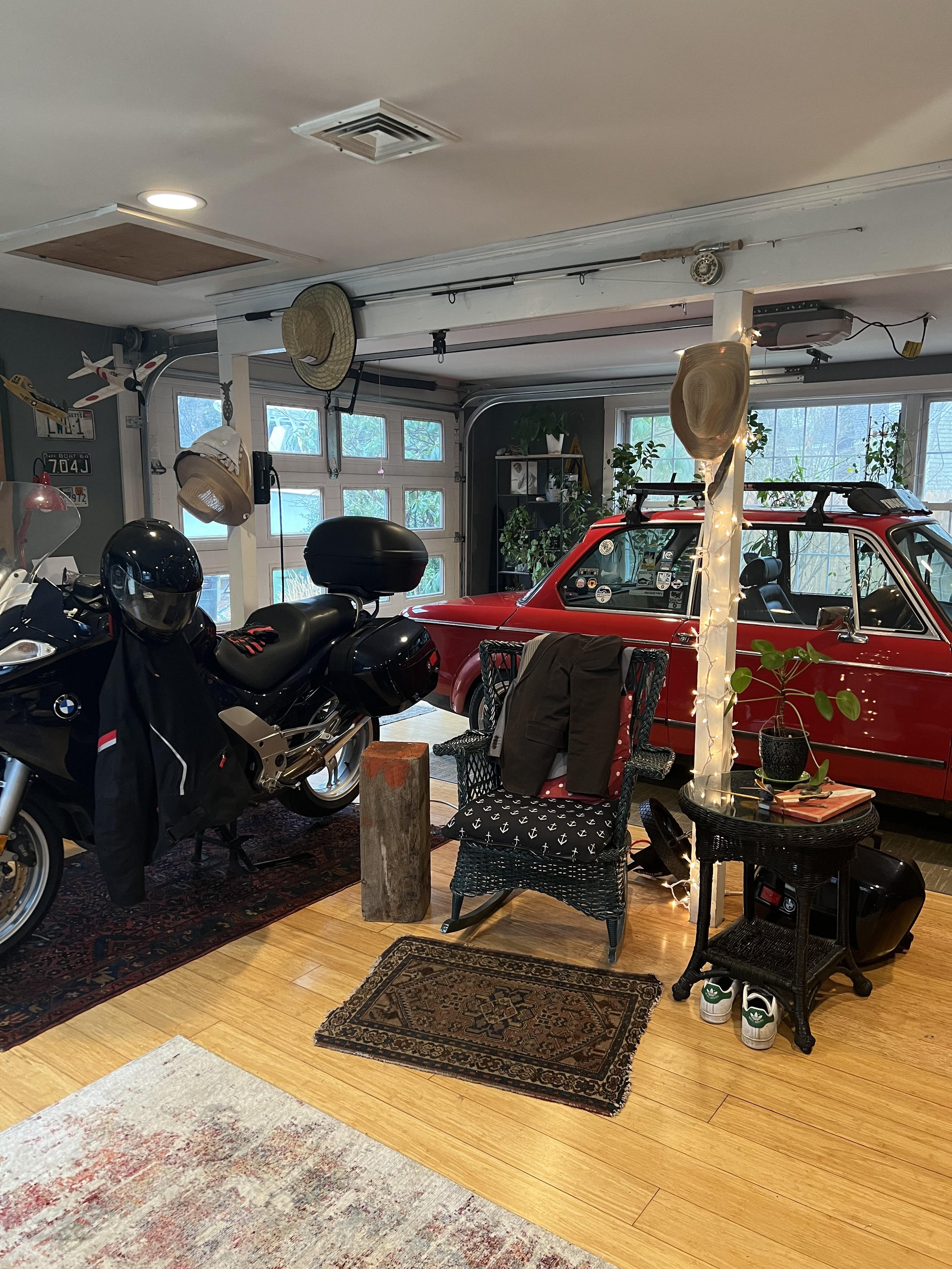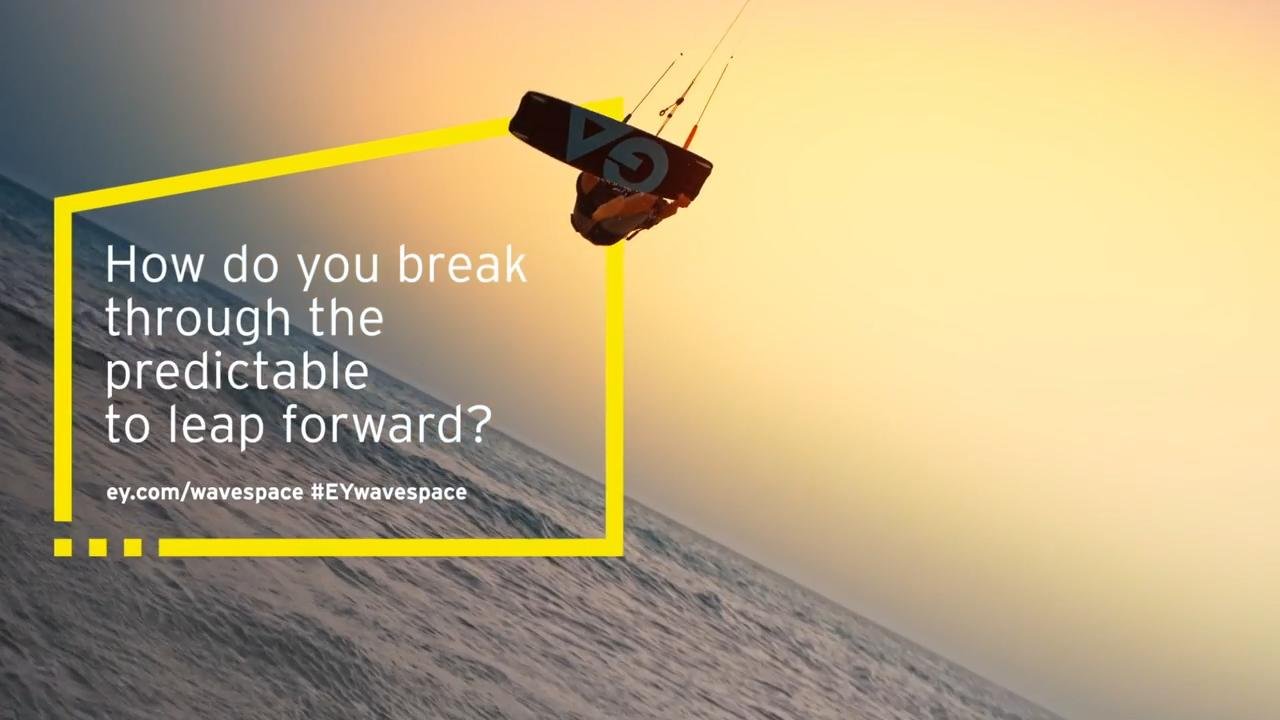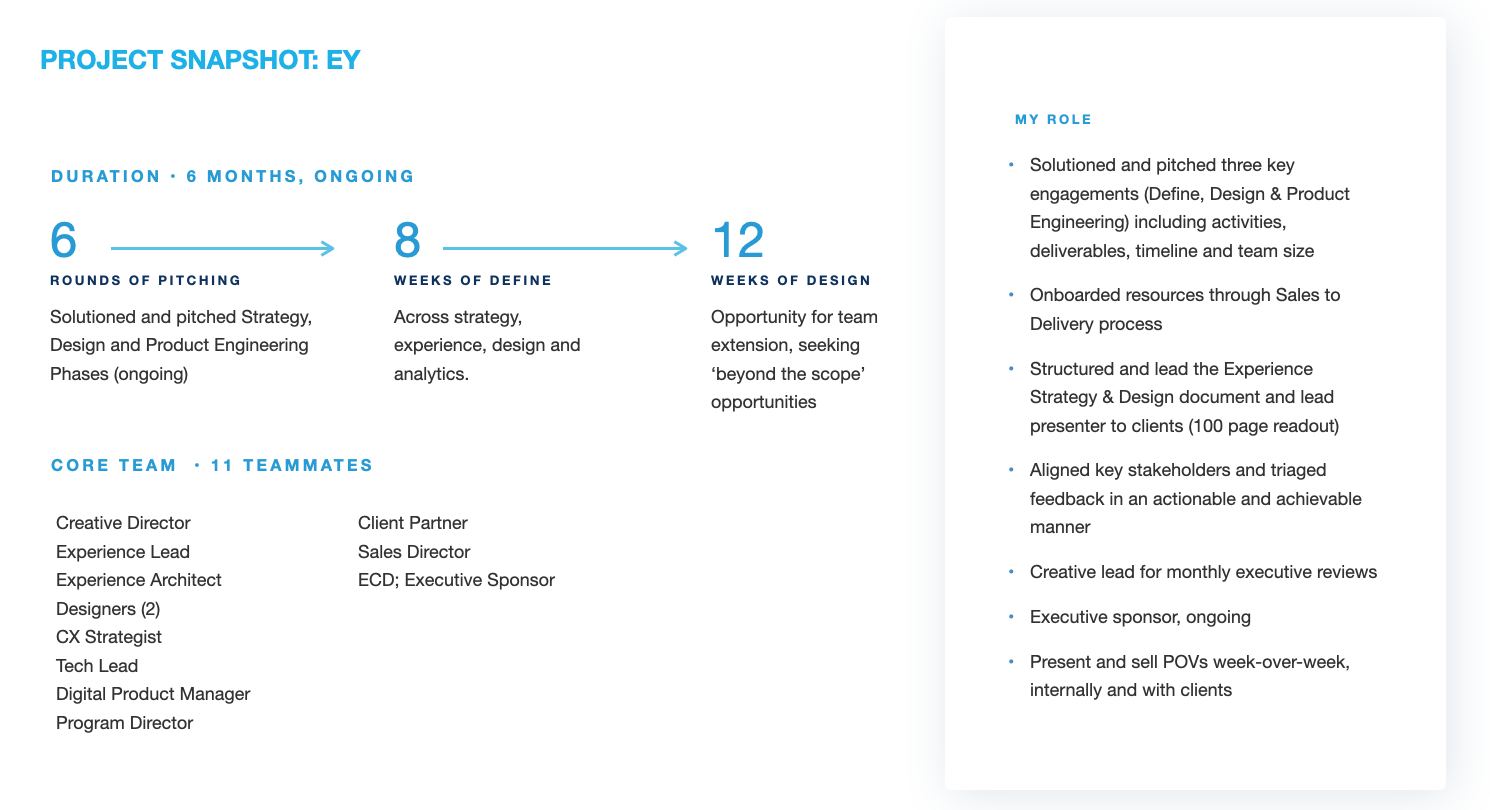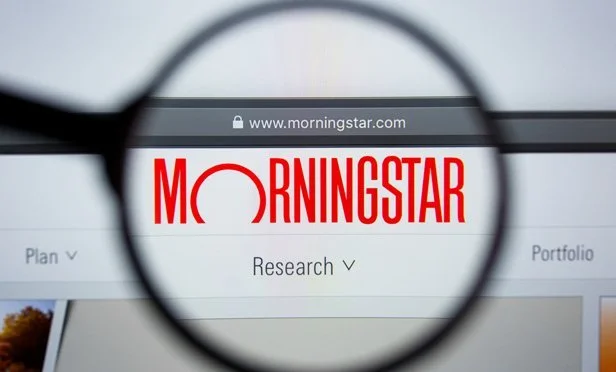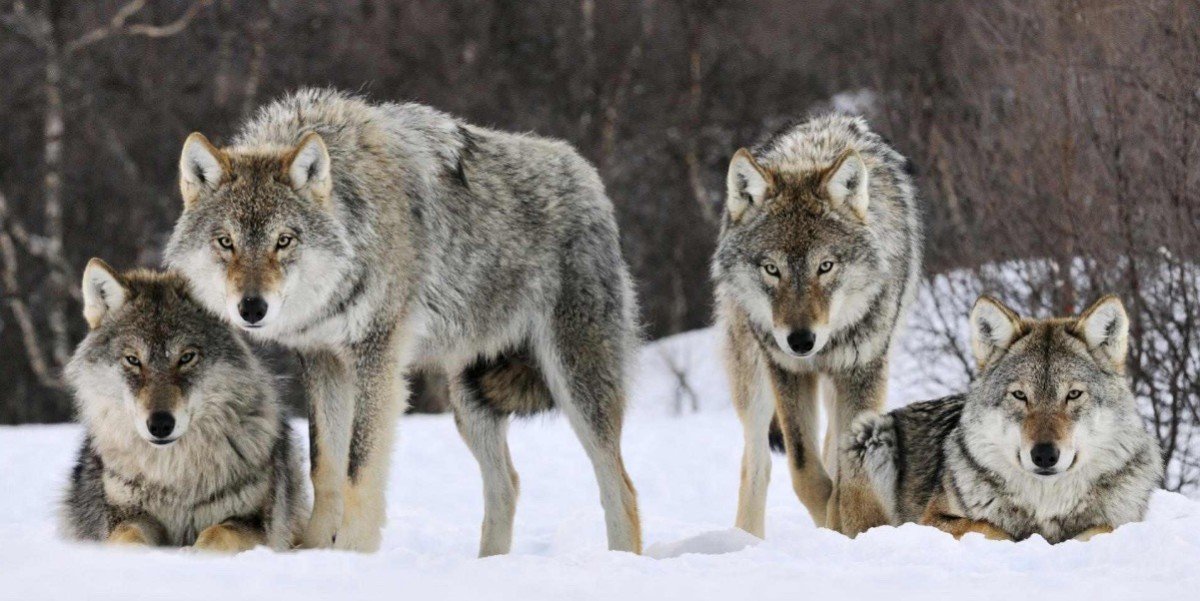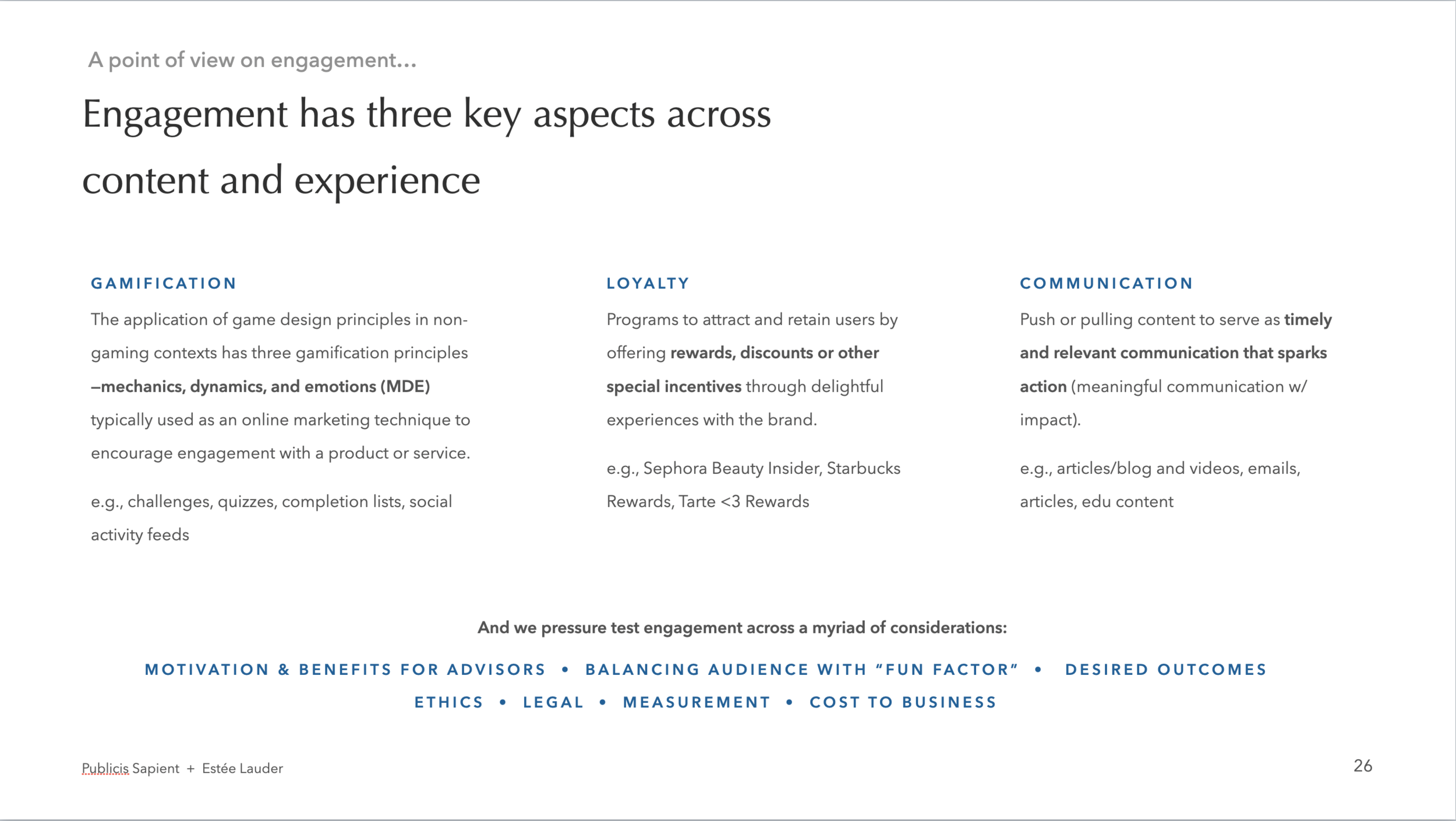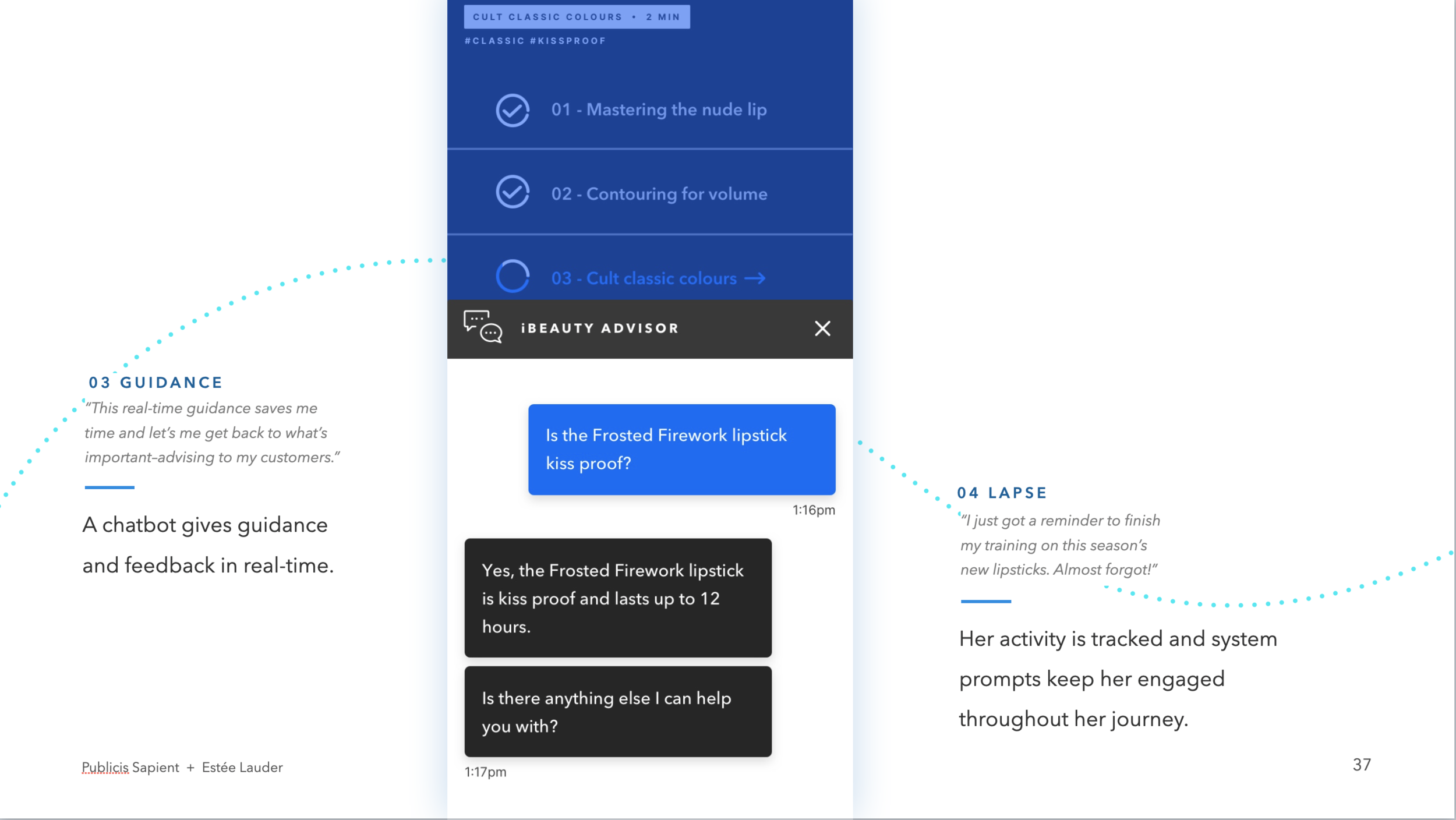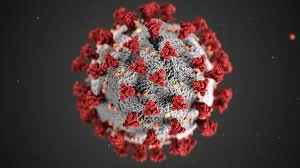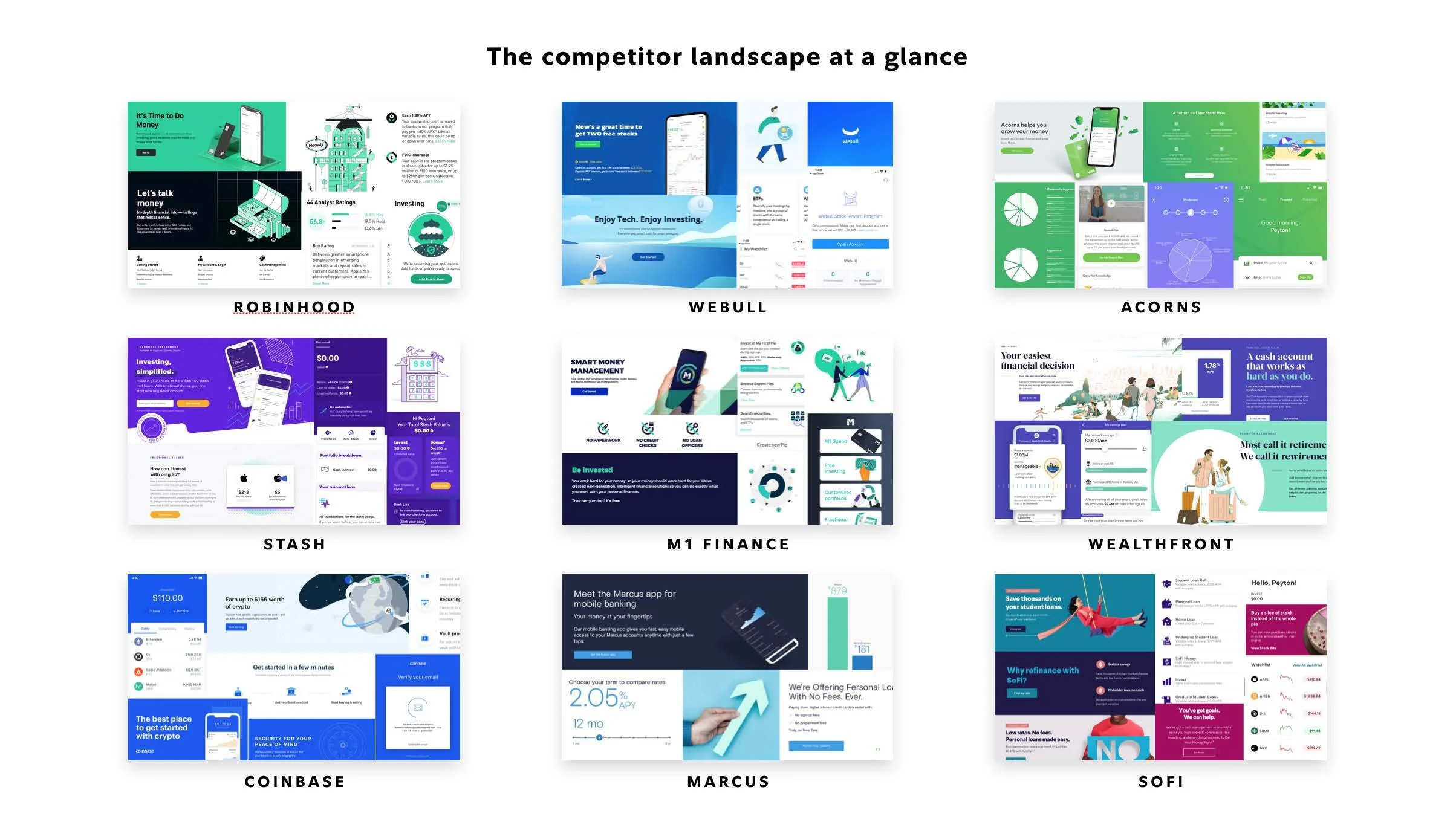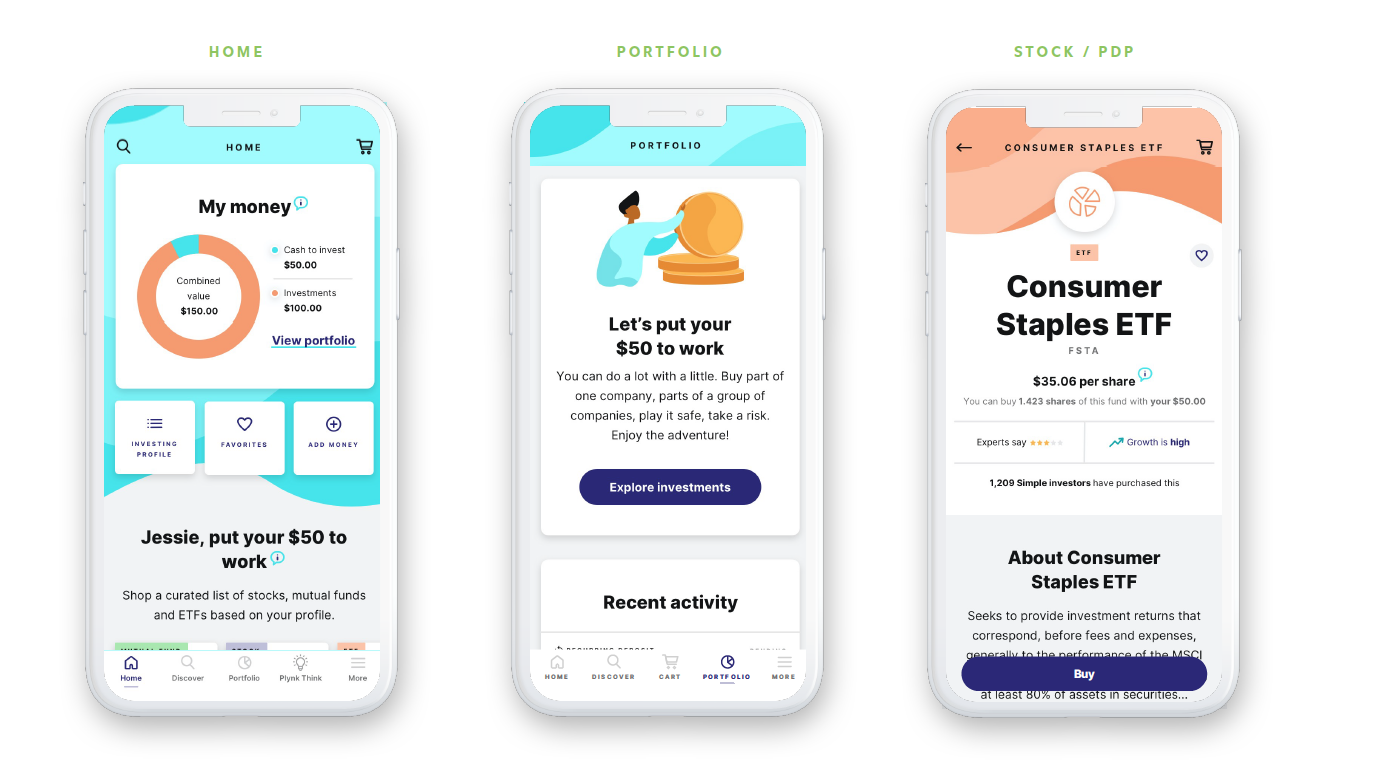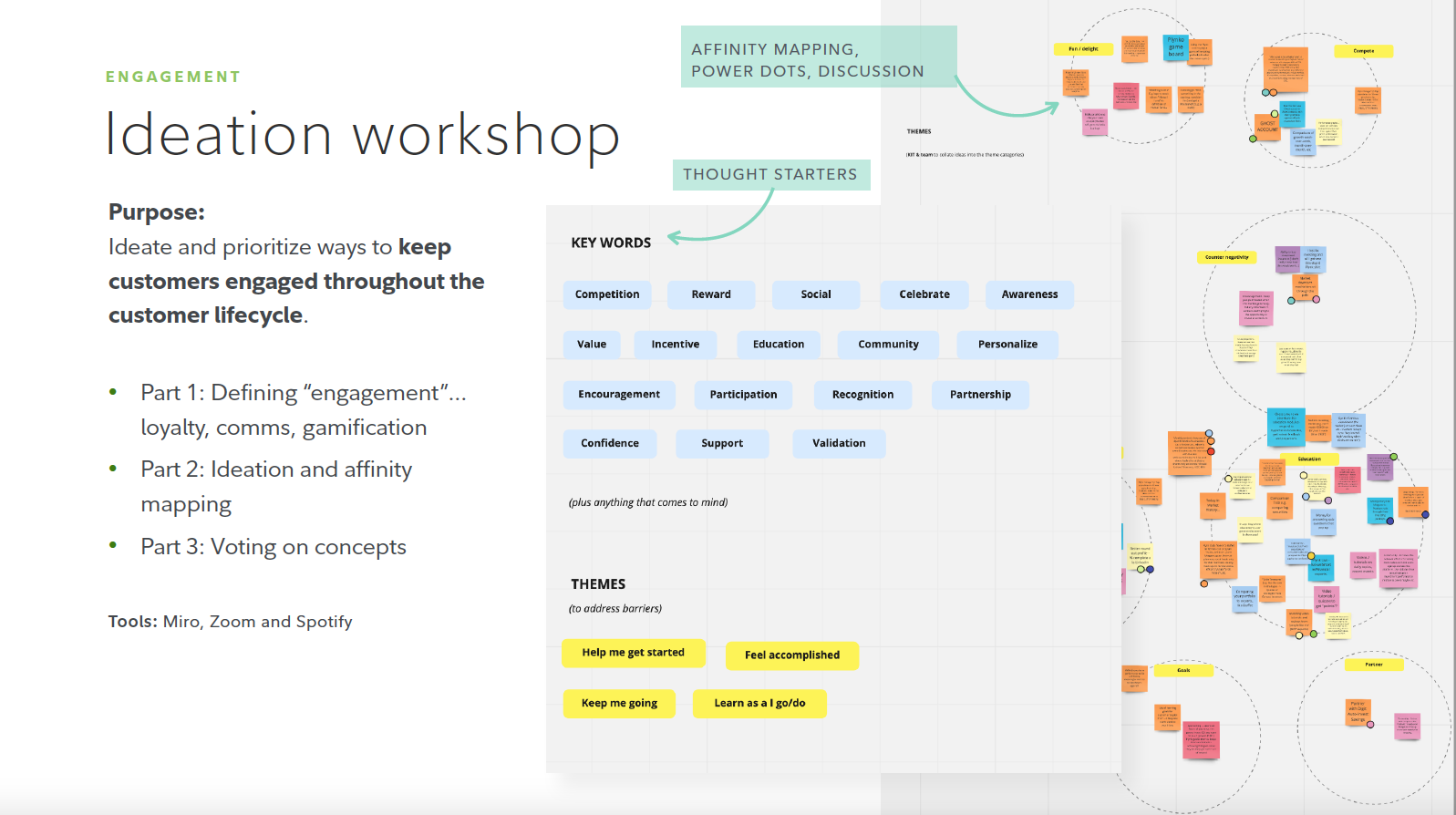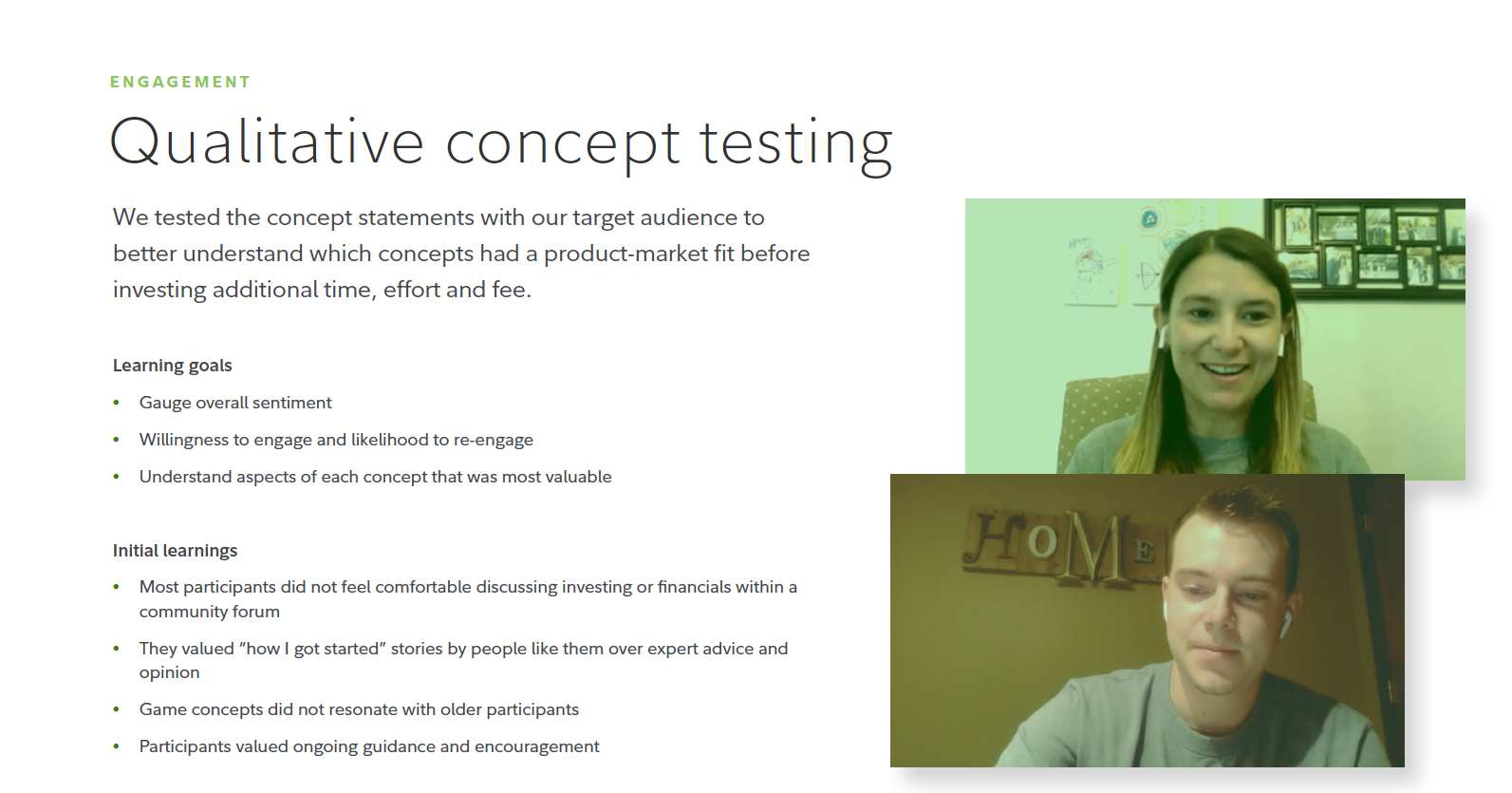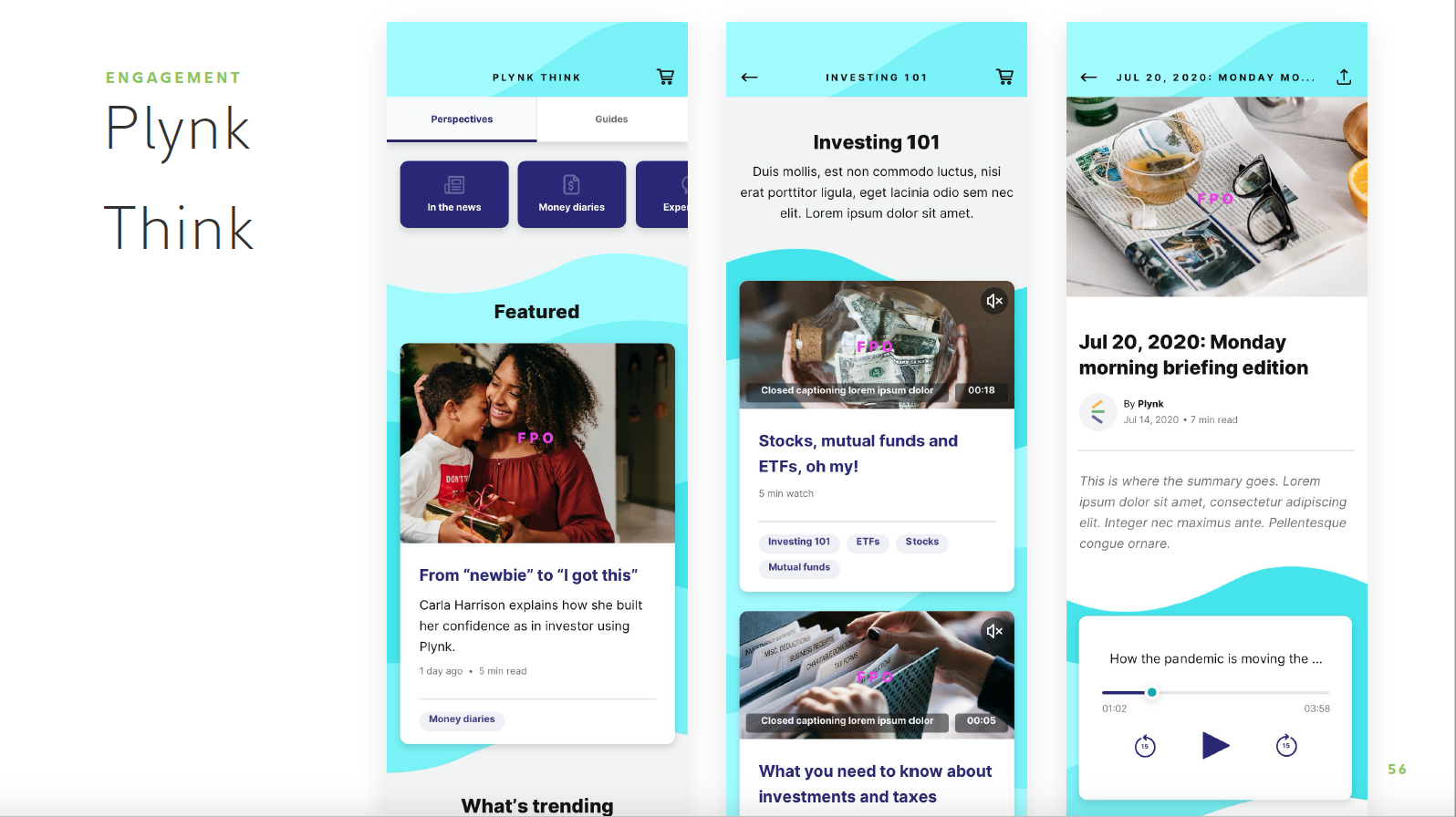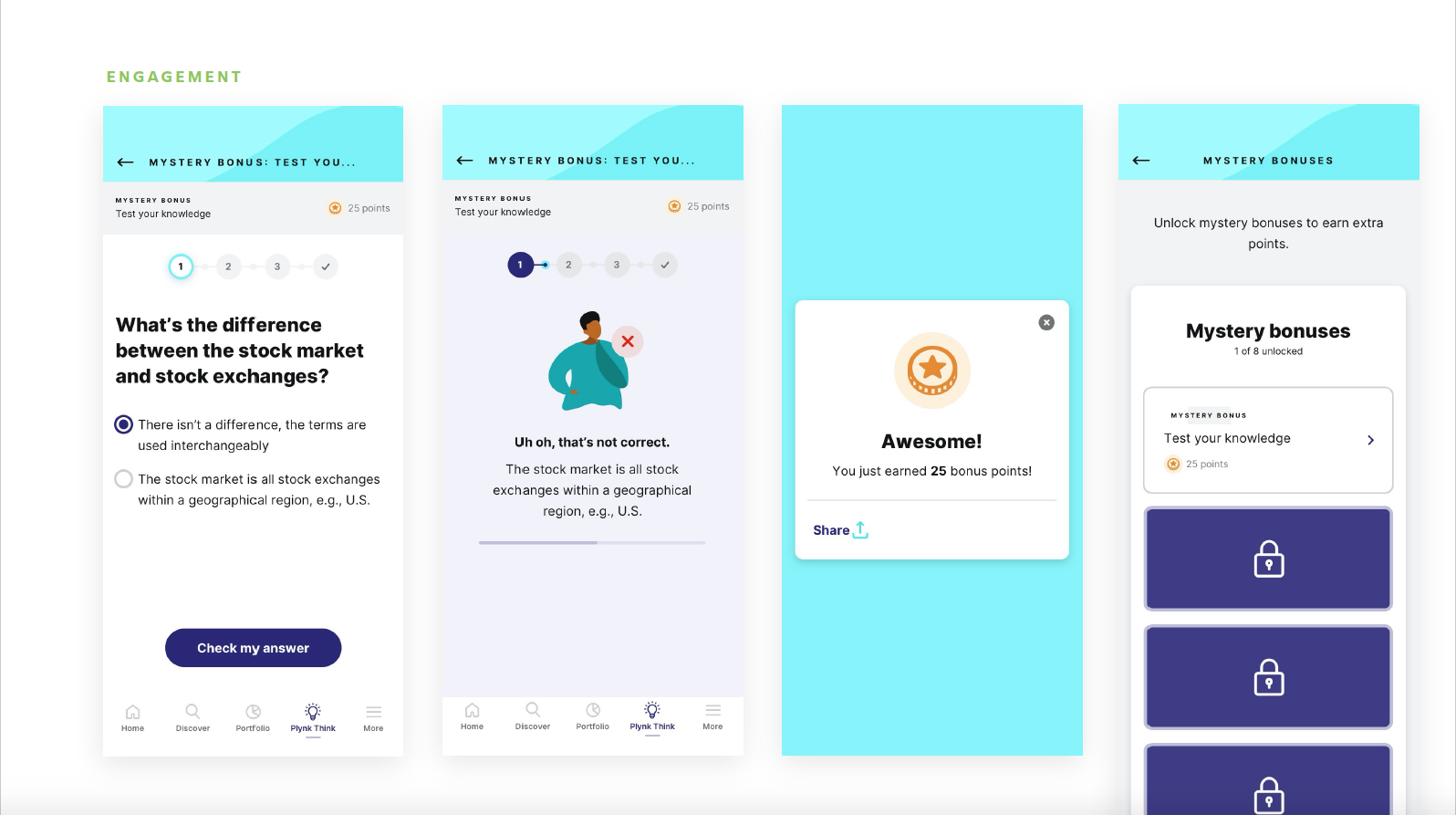A pitch is a brochure. Captivating, motivating, compelling and memorable. Everyone understands the value of a winning brochure, and because we uniquely possess exquisite brochure-making talent in house (art directors and writers work here) we especially understand this.
A pitch is a deliverable. The first deliverable we deliver, and it must contain the exemplary quality, skill, detail and design our prospects can expect from us when they become clients. This first deliverable is free—a gateway drug.
A pitch is for them, not us: The prospects should immediately see themselves in our work—their images, their style, their brand. It’s their baby, and we need them to recognize it as their own as soon as possible.
A pitch is a standalone narrative and prospects must be able to read from hello to thank you, on their own, without VO, because we often email the deck, and we aren’t there to push and prod it to be great.
A pitch has spec: There are simple, scalable ways to provide spec, without over-investing.
A pitch contains perspectives: To illustrate that we understand, in detail, how to orchestrate and balance strategy, experience and technology on the road to POC, MVP and beyond.
A pitch knows delivery: We must be detailed with activities and deliverables, team and plan—this is what they’re paying for and from a procurement perspective, how they’ll measure us against the competition. Detail, (even if it is wrong) is better than no detail.
A pitch is as short or long as it needs to be. Pages, as long as they’ve purpose, will never stand in the way of a compelling offering. If it’s long, it’s probably for good reason, and we’ll never create a presentation that can’t be presented in the time we’re given to present.

